Innovation helps Israeli caviar conquer world tastes

Kibbutz Dan, located on the foot of Mount Hermon in northern Israel, decided to set up fish farms over 80 years ago.
It seemed like a good proposition. The ponds would be filled by the stream of melted snow flowing down into the Dan River, whose water the Bible noted for its purity. Today, its temperature is a constant 16degreesCelsius year round, ideal for fish cultivation.
In the 1990s, the influx of Russian immigration stimulated the ambitious idea to extend the thriving trout-farming business to caviar in the hope that a local market was in the making.
Fingerlings of the Osetra sturgeon were imported from Russia. This is one of the top three breeds for caviar production, which includes the famous Beluga variety.
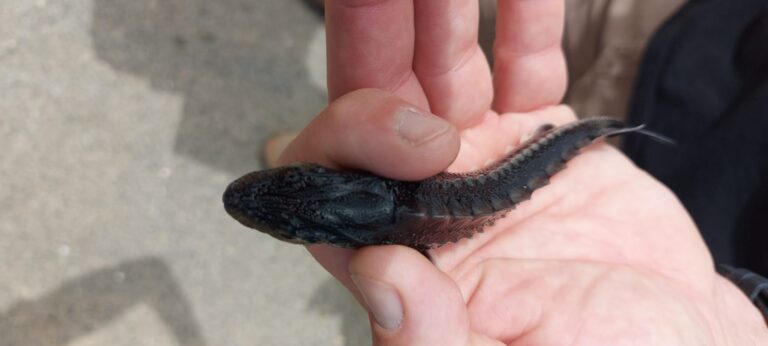
Fast forward to 2023 and Caviar Galilee is the sole farm of its kind in the Middle East and a supplier of the premier Karat Caviar brand to top international distributors.
Clients include the 90-year-old illustrious French purveyor, Petrossian, as well as Marky’s, one of America’s foremost brands.
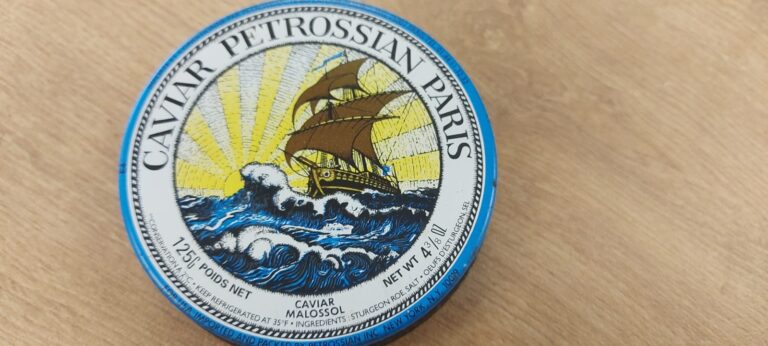
In addition, the company has developed technological innovations to deal with innumerable challenges in harvesting egg roe from the sturgeon to produce this costliest of delicacies.
“There are longstanding traditions in the caviar business, but we decided to bolster it with science,” Karat Caviar CEO Assaf Koren tells ISRAEL21c.
Meeting each challenge
In an interview in his office on Kibbutz Dan, overlooking the 40 sturgeon ponds, Koren is systematic in describing each challenge and the breakthrough solutions developed in the onsite R&D laboratory.

The first hurdle, he says, is how to identify the females who carry the roe.
“All over the world, caviar farms do an ultrasound on the fish when they reach four years old. Our biologists developed a patented DNA test that enables the identification of the females at around two months old. This allows us to separate them from the males much earlier on so that we can cultivate them with extreme care.”
Around 1,000 samples are done per day and the yield is usually around 20,000 females.
The next challenge Koren explains is that egg roe can only be harvested after the female sturgeon reaches maturity, which can take nine years, if not longer.
The Israelis developed innovative farming methods to accelerate this process and enable the females to mature in their seventh year. “In Europe it takes 12 years on average and in Russia, 15 years,” according to Koren.
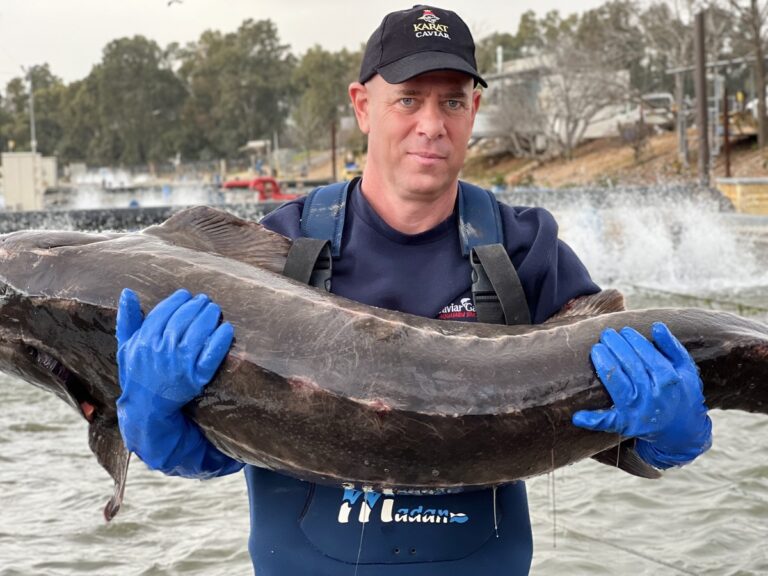
The next challenge is how to detect the best time to harvest caviar from the mature sturgeon.
“We have a very small window of time. From the age of seven we carry out an ultrasound on each fish so that we can check the eggs in quality, size and color. We are able to process 13,000 females in one month,” says the CEO, who grew up on Kibbutz Snir nearby.
Caviar Galilee is also one of the only farms in the world that does not rely on importing fingerlings. This allows “full control on what we want to raise and keeping the quality at a high level,” says Na’ama Ben-Naim, chief aquatic biologist at the farm, who has a PhD in fish reproduction.
Premium caviar
Although China now commands 30 percent of the 500-ton world caviar market, Koren says Chinese caviar is low in quality: “Many are grown in indoor factories which do not achieve the same level of taste and texture.”
Koren says at the recent Barcelona Seafood Fair, buyers were searching out Israeli caviar, which has become associated with high quality.
French chef Daniel Boulud includes Karat Caviar on his eponymous two-Michelin-star restaurant’s seven-course tasting menu.
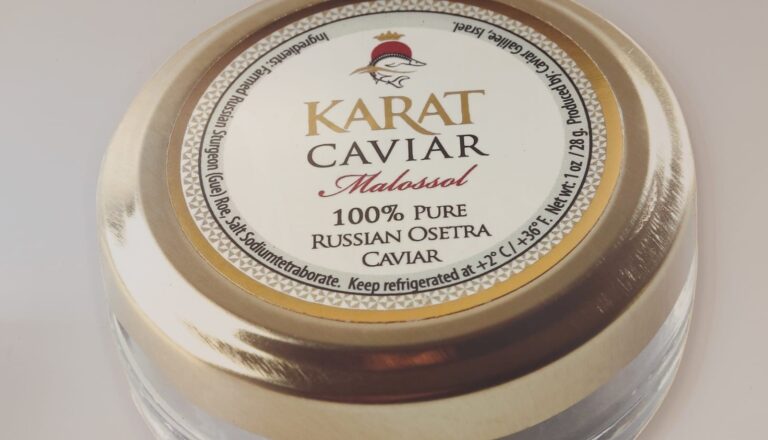
It should be noted that because sturgeon have no scales, their caviar is not considered kosher for Jews, but it is acceptable for Muslims.
Caviar and champagne
A visitor’s center was opened at the farm three months ago and provides a sophisticated champagne and caviar tasting every Friday.
For ISRAEL21c, Koren brings out a small silver jar of caviar and gives a full explanation of the ritual involved.
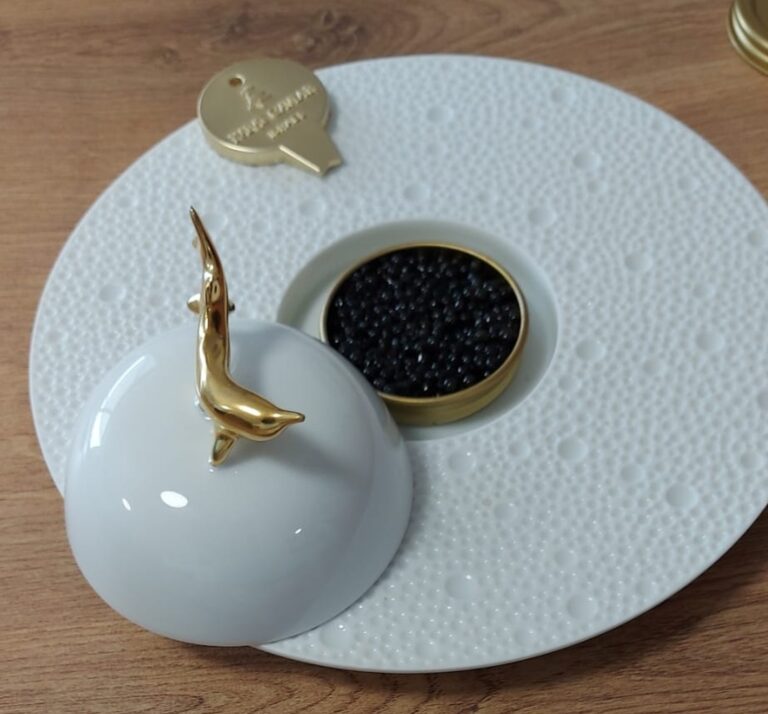
First the jar is placed on a very cold porcelain plate and is opened and left to breathe for a while, like a good wine.
Then a tiny mother-of-pearl spoon (never metal!) is used to scoop a small mound of the caviar “pearls” onto the hand to allow it to reach body temperature.
Then you lick it off and roll the caviar up to the palate “to let the flavors gain momentum.”
The taste is like no other I have ever sampled. It is has a slightly briny tang and what I can only imagine sea-air to taste like. The texture is firm, yet still deliciously soft.
Red, gold, black
Koren points out that every tasting experience is unique as each jar contains caviar from only one fish so as to maintain uniformity of taste, texture and size.
The next lesson is that Karat caviar comes in three colors: Renaissance, which is red and the most common; golden Baroque (the most expensive at 9,000 shekels per kilo, equivalent to $2,400), which is a bestseller in Dubai, Canada and Manhattan; and Gothic, the black caviar popular in Japan, Russia and Israel. The colors are not engineered but are due to genetics.
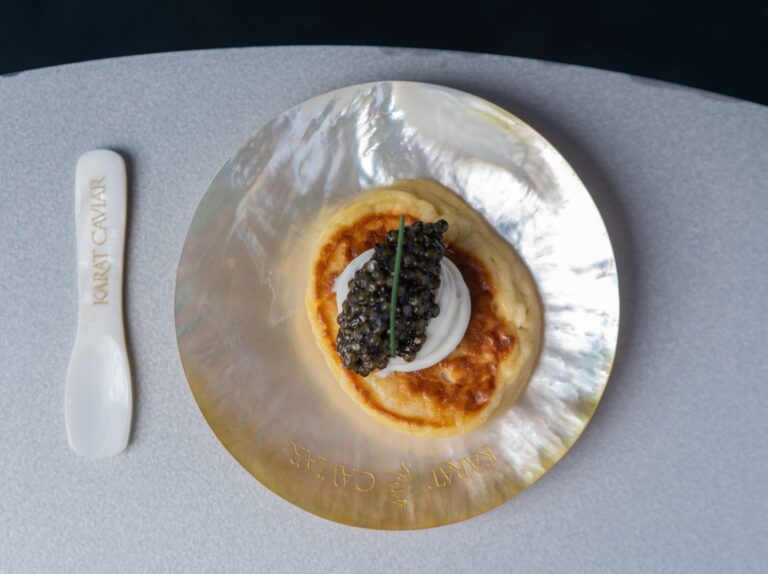
And what is Koren’s favorite dish containing caviar?
He doesn’t hesitate: it’s the blinis with sour cream, topped with caviar, that he recently ate at Boulud in New York.
“I know it’s the traditional choice, but it’s still the best combination,” he concludes.
For more information on Karat Caviar, click here.
The post Innovation helps Israeli caviar conquer world tastes appeared first on ISRAEL21c.
The post Innovation helps Israeli caviar conquer world tastes appeared first on ISRAEL21c.
